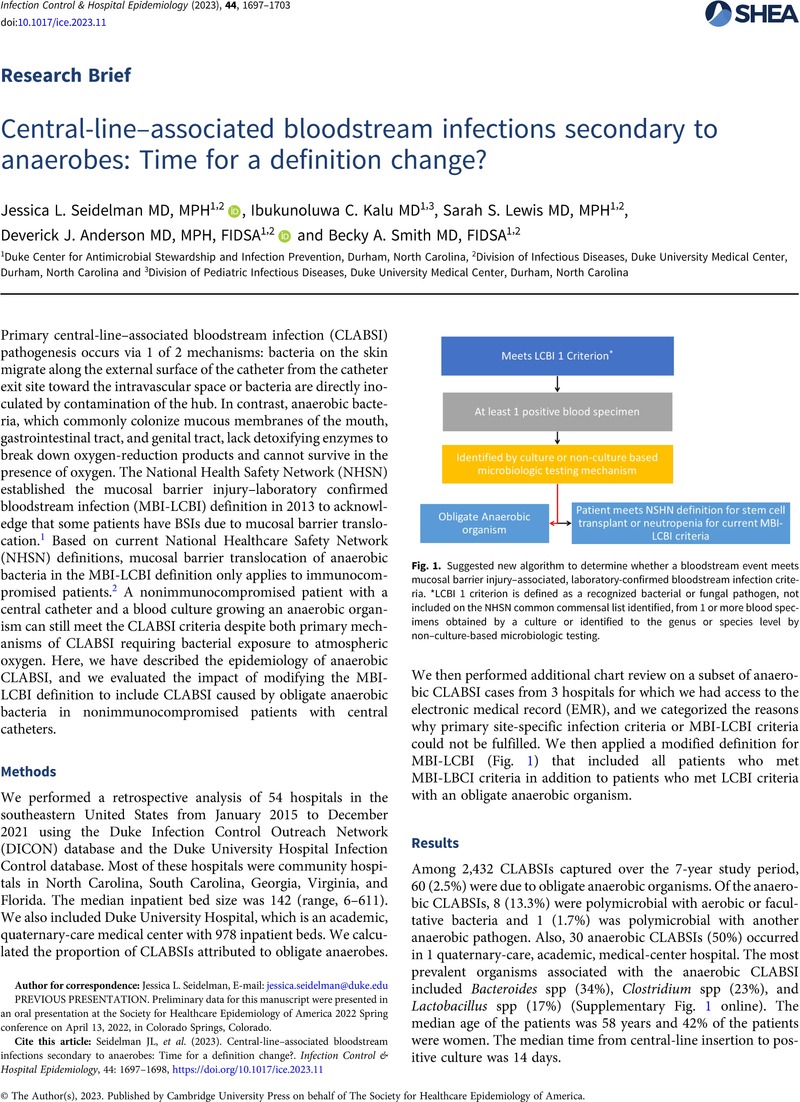Crossref Citations
This article has been cited by the following publications. This list is generated based on data provided by Crossref.
Mathur, Piyush
Naylor, Amanda J.
Auron, Moises
Beresian, Jean
Tallman, Alexandra
Griffith, Allison
Seasholtz, Kathleen
Manlapaz, Mariel
Zacharyasz, Katherine
Khatib, Reem
Mishra, Shreya
Haller, Kathryn
Fraser, Thomas
and
Holman, Katherine
2025.
Evaluating the Adequacy of Central Line-Associated Bloodstream Infection As a Quality Measure: A Cross-Sectional Analysis at a Single Tertiary Care Center.
Critical Care Explorations,
Vol. 7,
Issue. 1,
p.
e1205.




